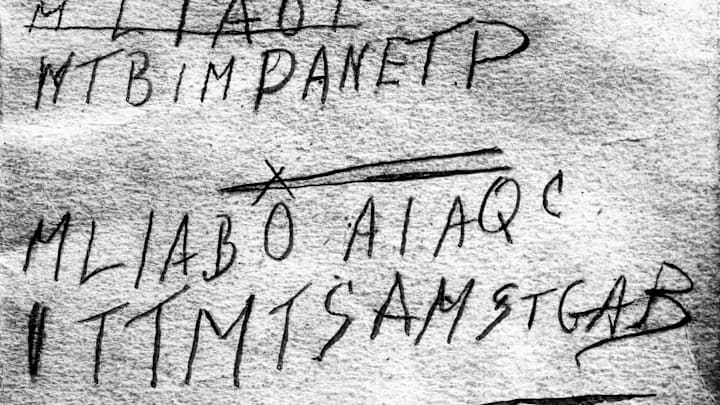Some victims who die under mysterious circumstances leave behind frustratingly few clues. That wasn't the case with the Somerton Man. When his body was discovered on a beach in South Australia in 1948, he was dressed in a full suit with the labels removed. His pocket contained a piece of paper scribbled with the words tamám shud, or "it is ended" in Persian. The page was traced to a book of poetry with a phone number and mysterious code written on the back cover. An abandoned suitcase thought to belong to the man had the name "KEANE" or "T.KEANE" inscribed on its contents. In addition to these leads, his distinctive ears, teeth, and calf muscles should have made him easy to identify, but no one ever claimed the corpse. Seventy-three years later, the case remains open, though researchers claim they've found a major piece of the puzzle. As The New York Times reports, DNA from the Somerton Man has been linked to an Australian man named Carl Webb.
Derek Abbott, an Australian professor of biomedical engineering, and Colleen Fitzpatrick, an American genetic genealogist, used biological remains obtained from the man's death mask to make the identification. When a cast was made of his face after he was discovered, some of his hair got stuck in the plaster, where it remained for over 50 years. Recent technological advancements made it possible for the researchers to extract DNA from the rootless strands.
Using genealogical data and historical documents, they were able to trace the DNA to one family. Of the relatives they looked at, Carl Webb, who went by Charles, seemed like the best match. He was born in 1905 in Victoria—the same Australian state the Somerton Man was suspected to be from—and he enjoyed writing and reading poetry. He liked to bet on horse races—opening up the possibility that the code in the back of the poetry book was a way to keep track of horse names. His sister had been married to a man named Thomas Keane. Most crucially, Webb left behind no documentation of his death. The DNA evidence alone doesn't make a stronger case for Charles over his siblings, but other aspects of his life align with the little we know about the Somerton Man.
The DNA researchers claim they've made a breakthrough, but the case is far from closed. In 2021, South Australian police exhumed the body of the mystery man to perform forensic tests of their own. They won't comment on the researchers' recent findings until they've concluded their investigation. Even if the Somerton Man has been identified, his cause of death and the motive behind his possible murder remains a mystery. He had suffered from severe internal bleeding at the end of his life, suggesting he had been poisoned, but no traces of the substance remained in his system.
The DNA evidence also contradicts one of the most popular theories surrounding the case. The phone number on the back of the Somerton Man's poetry book belonged to Jo Thomson, a nurse who claimed she never met the victim. According to Derek Abbott, the same researcher behind this new discovery, Jo Thomson had the Somerton Man's illegitimate child before he died. Pictures of Thomson's son supported this theory. Like the unidentified body, Robin Thomas had canines positioned next to his front teeth, and ears with upper hollows that were larger than the lower hollows—hereditary traits that are found in 1 percent or less of the population. But the newly extracted DNA doesn't match Robin's relatives, which means these shared features could be a freak coincidence.
Abbot has a greater stake in the story than most researchers. He ended up marrying Jo Thomson's biological granddaughter after meeting her through his research. If his findings are accurate, it means the children they have together aren't the descendants of the Somerton Man after all.
[h/t The New York Times]
